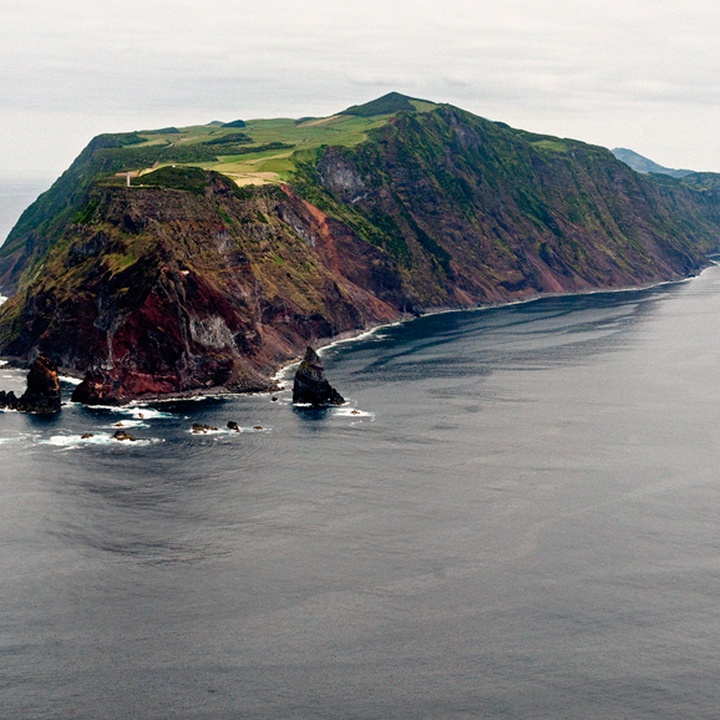Text size:
Ponta dos Rosais
Natural Monument


Located on the northwest end of São Jorge, this protected area has about 170 hectares and rises to 376 metres of altitude.
Due to its geologic characteristics and natural factors, such as damp cyclonic winds and turbulent seas, in this area, mountain habitats join with coastal elements, housing a diversity of flora and fauna species, from which stand out a large number of nesting seabirds.
Ponta dos Rosais is characterized by high and steep sea-cliffs and several islets and features an imposing rocky tip, extending northwest in the adjacent marine zone as a submarine volcanic ridge.
Marine erosion has uncovered the stratigraphic sequence and the inner structure of this island's sector, including volcanic cones, several dykes, a volcanic neck and outcrops of basaltic scoria with grains of different sizes and shades, from black to reddish.
The upper part of Ponta dos Rosais presents itself as a small plateau, where the old lighthouse is and which landscape, to the southeast, is characterized by volcanic cones of smooth shapes and poorly defined craters.
Among the seabirds that breed in the Monument, the most noteworthy are the Roseate Tern (Sterna dougallii), the Common Tern (Sterna hirundo), the Barolo Shearwater (Puffinus lherminieri baroli) and the Cory’s Shearwater (Calonectris borealis). In this area are also present some species of terrestrial birds as the Common Buzzard (Buteo buteo rothschildi), the Azores Wood Pigeon (Columba palumbus azorica), the Azores Chaffinch (Fringilla moreletti) and the Atlantic Canary (Serinus canaria).
Regarding flora, and due to the unique characteristics of this place, it is possible to observe a meadow of Azorean Dock (Rumex azoricus), a protected species that forms communities in scarce sites. Other endemic species such as the Azorean Heather (Erica azorica), the Azorean Coastal Forget-me-not (Myosotis maritima) and the Azorean Coastal Fescue (Festuca petraea) also stand out.
This site is part of the Special Area of Conservation (SAC) Ponta dos Rosais within the Natura 2000 network, also constituting an Important Bird and Biodiversity Area (IBA) of the BirdLife International organization and a geosite of the Azores UNESCO Global Geopark.

